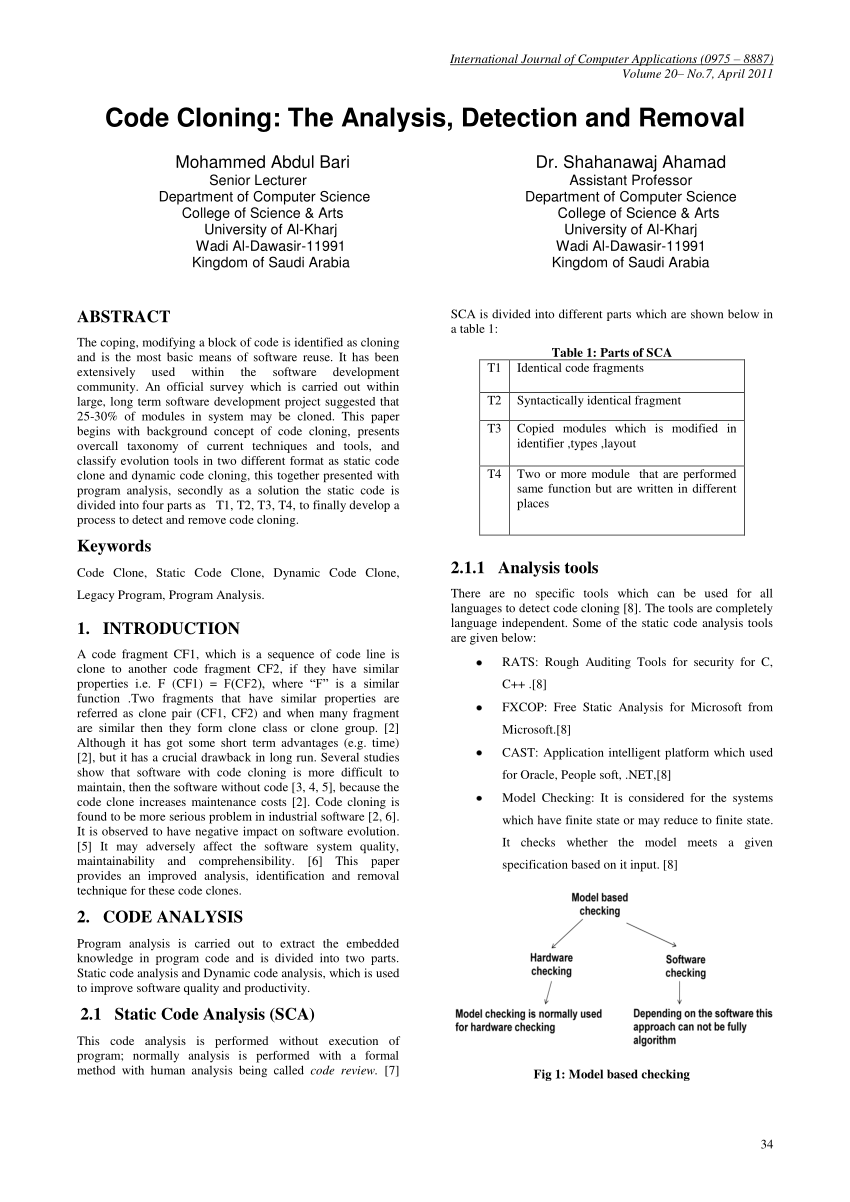Code Cloning Concerns: Reducing Redundancy and Duplicate Code

Code cloning, the practice of duplicating code within a software project, can lead to significant concerns for software development and maintenance. Redundancy and duplicate code introduce numerous problems, including:

- Increased maintenance costs: Duplicate code requires additional maintenance effort, as changes need to be made in multiple locations. This can be time-consuming and error-prone.
- Reduced code quality: Duplication can lead to inconsistencies between code blocks, making it harder to ensure code correctness and reliability.
- Increased software complexity: Redundant code adds to the complexity of the software, making it harder to understand, debug, and maintain.
- Duplication of bugs: Bugs that exist in one copy of the code are likely to be replicated in the other copies, increasing the risk of software failures.
To address these concerns, it’s crucial to minimize code cloning and strive for code reuse and refactoring. Strategies for reducing redundancy include:
- Refactoring: Refactoring involves restructuring code without changing its behavior. Techniques like extracting functions, using object-oriented inheritance, and applying design patterns can help reduce duplication.
- Code duplication detection tools: These tools can identify duplicated code fragments, making it easier to locate and address redundancies.
- Code reuse libraries: Creating and using reusable code libraries can promote code sharing and reduce duplication.
- Code generation tools: Sometimes, code can be automatically generated from specifications, reducing the need for manual duplication.
By actively reducing code cloning and embracing code reuse, developers can improve software quality, reduce maintenance costs, enhance maintainability, and mitigate the risks associated with duplicate code.## Code Cloning Concerns: Reducing Redundancy And Duplicate Code
Executive Summary
Code cloning refers to the act of duplicating code. Code duplication enhances software development velocity. But, this practice poses great challenges and even threatens software quality later in the development process.
This paper explores measures that can be used to manage code cloning. These measures include implementing coding standards, training developers on best practices, refactoring code, and employing clone detection tools.
Introduction
Code cloning is a significant concern in software development. It can lead to a number of problems, including:
- Increased maintenance costs
- Reduced code quality
- Difficulty in refactoring
- Increased risk of bugs
FAQ
Q: What is code cloning?
A: Code cloning is the practice of duplicating code. This can be done for a variety of reasons, such as to save time or to avoid rewriting code that has already been tested.
Q: What are the problems with code cloning?
A: Code cloning can lead to a number of problems, including increased maintenance costs, reduced code quality, difficulty in refactoring, and increased risk of bugs.
Q: How can I avoid code cloning?
A: There are a number of ways to avoid code cloning, including implementing coding standards, training developers on best practices, refactoring code, and employing clone detection tools.
Top 5 Subtopics
1. Code Redundancy
Code redundancy exists when there is unnecessary same code with different names or data types used within a program.
- Disadvantages of code redundancy include:
- Difficult code maintenance
- Increased fault proneness
- Reduced readability
- Higher computational time
2. Refactoring
Refactoring means changing a software system in such a way that it does not alter the external behavior of the code, yet improves its internal structure.
- Benefits of refactoring include:
- Improved code quality
- Increased code maintainability
- Enhanced software design
- Reduced risk of bugs
3. Clone Detection Tools
Clone detection tools are software programs that can help you identify code clones in your codebase.
- Some of the most popular clone detection tools include:
- CCFinder
- CloneDR
- NiCad
4. Coding Standards
Coding standards are a set of rules that govern the way that code is written. Coding standards can help to reduce code cloning by ensuring that all developers are using the same coding conventions within a project.
- Some of the benefits of coding standards include:
- Improved code readability and maintainability
- Increased consistency within a codebase
- Reduced risk of bugs
5. Developer Training
Developer training is an essential part of any software development process. Training can help developers to learn best practices for writing code, which can help to reduce code cloning.
- Some of the topics that can be covered in developer training include:
- The principles of good software design
- Best practices for writing code
- The use of code review tools
Conclusion
Code cloning is a serious problem that can have a negative impact on the quality and maintainability of your software. By implementing the measures outlined in this paper, you can reduce code cloning and improve the overall quality of your codebase.
Keyword Tags
- code cloning
- code duplication
- code redundancy
- code refactoring
- clone detection tools
